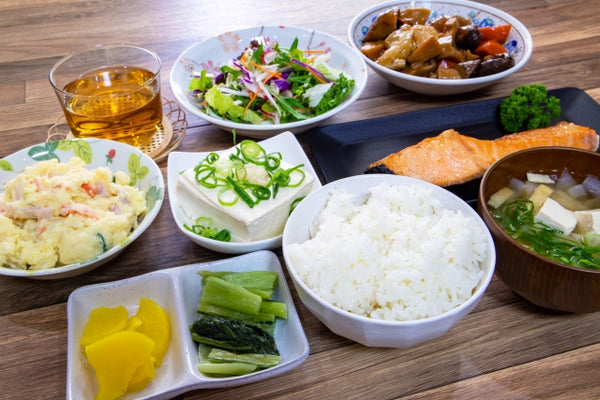Goho: The Five Ways of Cooking Japanese Cuisine

One might say the most important principles of Japanese come in fives. There are the five tastes, gomi, the five senses, gokan, the five colors, goshiki, the five cooking methods, gohon, and the five key ingredients remembered with the mnemonic sa, shi, su, se, so.
The purpose of these rules is not only to create a satisfying meal, but to also treasure the ingredients in such a way that ensures their true nature is expressed through one’s cooking.
To accomplish these goals requires proper preparation, and that is where the goho come in. Without knowledge of the five basic methods of cooking, it would be much more difficult to prepare a meal that invokes the five senses and inspires the five tastes.
The five basic cooking methods can be broken down into nama (cutting), niru (simmering), yaku (grilling), musu (steaming), and ageru (frying). In traditional kaiseki cuisine each of these methods is expressed as a separate dish, highlighting their characteristics and the ways they best compliment certain ingredients.
The Fives Ways

Nama (Raw)
Meaning raw, nama refers to the method of cutting ingredients. This is used to prepare both foods intended to be eaten raw, like sashimi, as well as decorative displays of knife work often seen in traditional Japanese cuisine. The method of nama also refers to the skillful use of a knife to cut ingredients into a form that is easiest to eat. It is the foundational skill and perhaps one of the most distinguishing features of Japanese cuisine.

Niru (Simmering)
Niru is the precise skill of simmering ingredients until they are perfectly tender and at their peak of flavor. This can be either in a dashi broth, another seasoned liquid, or even water. It requires skill in monitoring the ingredients themselves as well as the temperature of the simmering liquid.

Yaku (Grilling)
Yaku refers to the methods used to grill ingredients. This includes cooking ingredients over an open flame, as well as sautéing or shallow frying them in a shallow pan with some oil. For these, time and heat control are two key elements.

Musu (Steaming)
Musu is a method used to create a number of Japanese dishes, from main courses to side dishes and desserts. It involves the process of cooking through steam, usually in a pot with a covered lid, but bamboo baskets are also used.

Ageru (Frying)
Ageru may be a familiar method in Japanese cooking due to the popularity of tempura. It is the use of oil and fat to deep-fry ingredients at high temperatures. This method is often used because of its ability to cook ingredients very quickly without losing any of its natural flavor.
Armed with these techniques, one can begin the process of planning the meal. By deciding what ingredients to use and how you will prepare them with these five methods, the other principles of five will follow.

About the author: The spark that lit Kevin Kilcoyne’s interest in Japanese culture began in elementary school through a friendship with his then classmate Keisuke. Since then, that passion has evolved and bloomed to encompass more than just video games and manga, leading Kevin to live in Japan as a participant of the JET program. During his time in Japan, Kevin sought out as many foods as he could, the experiences and taste memories lingering long after they had gone. Now he is forging a path to link his passions for Japanese food, history, and visual culture and is planning for his return to live in Japan once again. For now, you can find Kevin on Instagram (@waruishouten) where he posts his photography and illustration work. Keep an eye out for more posts and updates as Kevin delves more deeply into his passions for writing and food!





5 comments
Thank you for your comment! Although we can’t comment on the reason for the lower cancer rates in Japan, we do believe that a healthy diet is important for ones well being.
I have been researching on what are reasons behind lower rate of Cancers in Japan then some websites suggested that it is because of their diet. Nice to know
I was researching into Japanese cuisine, and one of the topics is cooking method. This website was really helpful and informative, especially with the examples and pictures. Thank you!!
We’re glad that you found the information to be helpful and hope you enjoy our special products from Japan!
This is very help full web site i love japanese food i have lorning to many item for japanese food and method thank u so mach